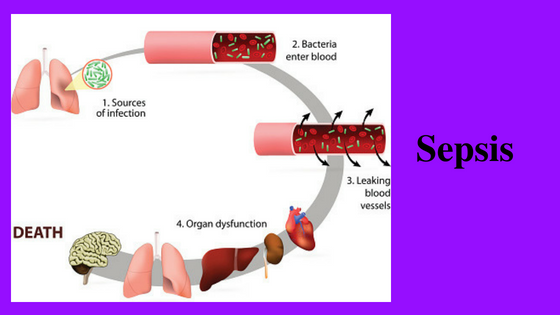Management
of suspected sepsis and septic shock in adults:
Sepsis
is a clinical and life-threatening condition characterized by systemic
inflammation due to infection. The sepsis severity is continuum ranging from
sepsis to septic shock.
Signs and symptoms:
The
signs and symptoms include low body temperature, fever, increased heart rate,
confusion, metabolic acidosis. The early sepsis signs are a rapid heart rate,
high blood sugar and decreased urination. In case of sepsis, the drop in blood
pressure may leads to shock. Some symptoms are also related to specific
infection. Severe sepsis causing poor organ function or insufficient blood
flow.
Cause:
Sepsis
is caused by an immune response which is triggered by an infection. Most commonly,
the infection is known by bacterial, but it may also be from fungi, viruses, or
parasites. Common locations for the primary infection include lungs, brain,
urinary tract, skin, and abdominal organs.
Sepsis
is normally treated with intravenous fluids and antibiotics. Typically,
antibiotics are given as soon as possible. Often, continuous care is performed
in an intensive care unit. If fluid replacement is not enough to maintain blood
pressure, medications that raise blood pressure may be used. To support the
function of the lungs and kidneys, mechanical ventilation and dialysis may be
required.
Diagnosis:
For
proper management of sepsis, early diagnosis is necessary, because the
initiation of rapid therapy is key to reducing deaths from severe sepsis. To
bring attention to potential cases as early as possible, some hospitals use
alerts generated from electronic health records.
Immediate Evaluation
and management:
Correcting
hypoxemia and Securing the airway and establishing venous access for the early
administration of fluids and antibiotics are priorities in the management of
patients with sepsis and septic shock.
Establish venous
access: Supplemental
oxygen should be supplied to all patients with sepsis and oxygenation should be
monitored continuously with pulse oximetry. To support the increased work of
breathing that typically accompanies sepsis, intubation and mechanical
ventilation may be required.





Comments
Post a Comment